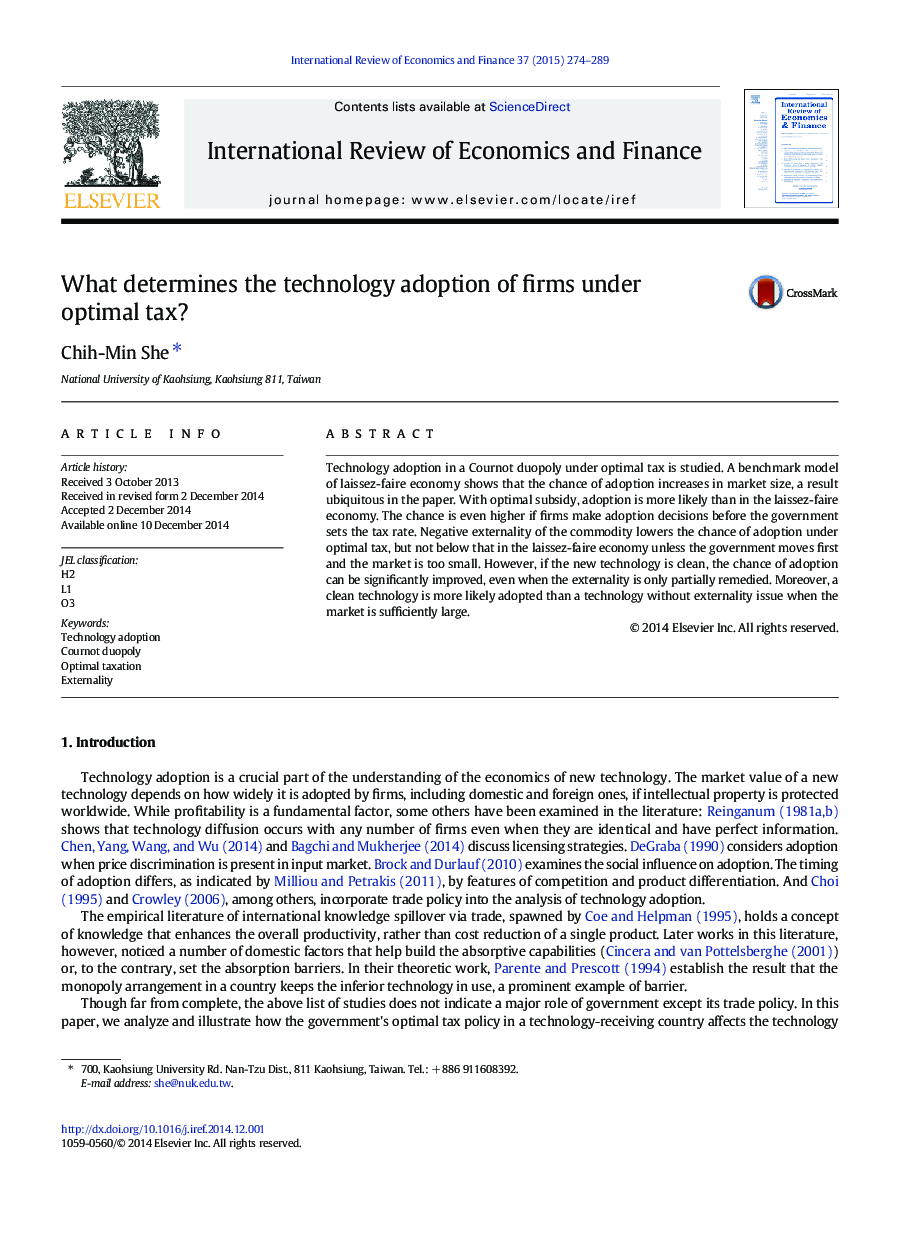| Article ID | Journal | Published Year | Pages | File Type |
|---|---|---|---|---|
| 5083430 | International Review of Economics & Finance | 2015 | 16 Pages |
â¢The chance of adoption increases in market, cost reduction, cleanness of technology.â¢The chance of adoption decreases in externality and fixed cost of adoption.â¢With optimal subsidy, adoption is more likely than in the laissez-faire economy.â¢Negative externality lowers the chance of adoption, but not below laissez-faire.â¢If technology is clean, the chance of adoption can be significantly improved.
Technology adoption in a Cournot duopoly under optimal tax is studied. A benchmark model of laissez-faire economy shows that the chance of adoption increases in market size, a result ubiquitous in the paper. With optimal subsidy, adoption is more likely than in the laissez-faire economy. The chance is even higher if firms make adoption decisions before the government sets the tax rate. Negative externality of the commodity lowers the chance of adoption under optimal tax, but not below that in the laissez-faire economy unless the government moves first and the market is too small. However, if the new technology is clean, the chance of adoption can be significantly improved, even when the externality is only partially remedied. Moreover, a clean technology is more likely adopted than a technology without externality issue when the market is sufficiently large.
